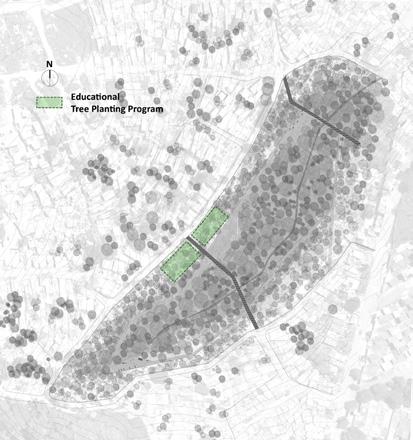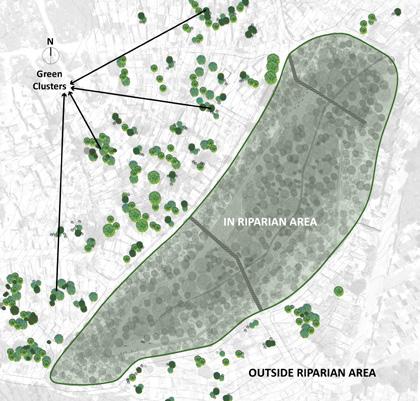
2 minute read
Reforestation
(Constructed wetlands treatment of municipal wastewaters. (2000). Cincinnati, OH: Environmental Protection Agency), the Taubman Team envisions that the constructed wetland design will be like a green belt circling the area, as is shown in figure 22.
Proper plant species are crucial as they will provide a more sustainable impact for the wetland (Bioswales, Vegetative Buffers, & Constructed, n.d.). The selection of native species can provide year-round vegetative cover without the need for supplemental irrigation or fertilization. Native plants are the best option as they belong to the local ecosystem and provide high eco-value for local animals and plants (Bioswales, Vegetative Buffers, & Constructed, n.d.). Options for Ocupação Anchieta include: aquatic plants, grass, wild flowers, and groundcovers (see figure 32). Local municipal agencies, such as the Department of Agriculture, or environmental restoration groups may be able to provide guidance on more specific plant species.
REFORESTATION
We recommend planting vegetation on vacant land at the periphery of the riparian area, the site where 119 homes were recently removed in collaboration with TETO NGO (see figure 29). Reforestation will aid in the establishment and design of buffer zone(s). Current vegetation should not be disturbed because the forest has not been completely dilapidated and still contains many desired trees and shrubs. Some of the major functions of reforestation include:
1. Work as barriers to prevent residents from entering
2. Help the soil and groundwater recover from
113 Removed Houses.

114 Areas Dedicated to Education Purpose.
115 Green Clusters in the Whole Community. former pollution, and prevent pollutants from entering the creek

3. Fill in the vacant land and beautify the landscape
4. Facilitate the Environmental Education
Program initiated by Cultural Anchieta
Trees and grasses should be planted within the riparian area. Researchers argue that forested buffers are more effective in reducing nitrate level, while grass buffers can better dissolve phosphate (Osborne and Kovacic, 1993). Water quality tests conducted by the Taubman Team found both nitrate and phosphate in the creek and springs area; thus, buffers with trees and grasses may be the most successful.
Existing local vegetation can be a good indicator of which species grow well on the site. Native species that are fast growing and easily established are good choices for reforestation (Klapproth and Johnson, 2001). A collection of multiple species can contribute in landscaping, as well as resilience in the face of insect or disease epidemic (Hairston-Strang, 2005). Reforestation also involves planting aesthetically pleasing trees with flowers, fruits, etc. to encourage educational use and appreciation. Recommended species include tabebuia heptaphylla, avocado, and heisteria silvianii (see figure 32).
As previously mentioned, the Steering and Management committee should refer to the local agencies and environmental groups for guidance and instructions on plant species. This committee should also monitor and maintain the creek area after reforestation (see below).






